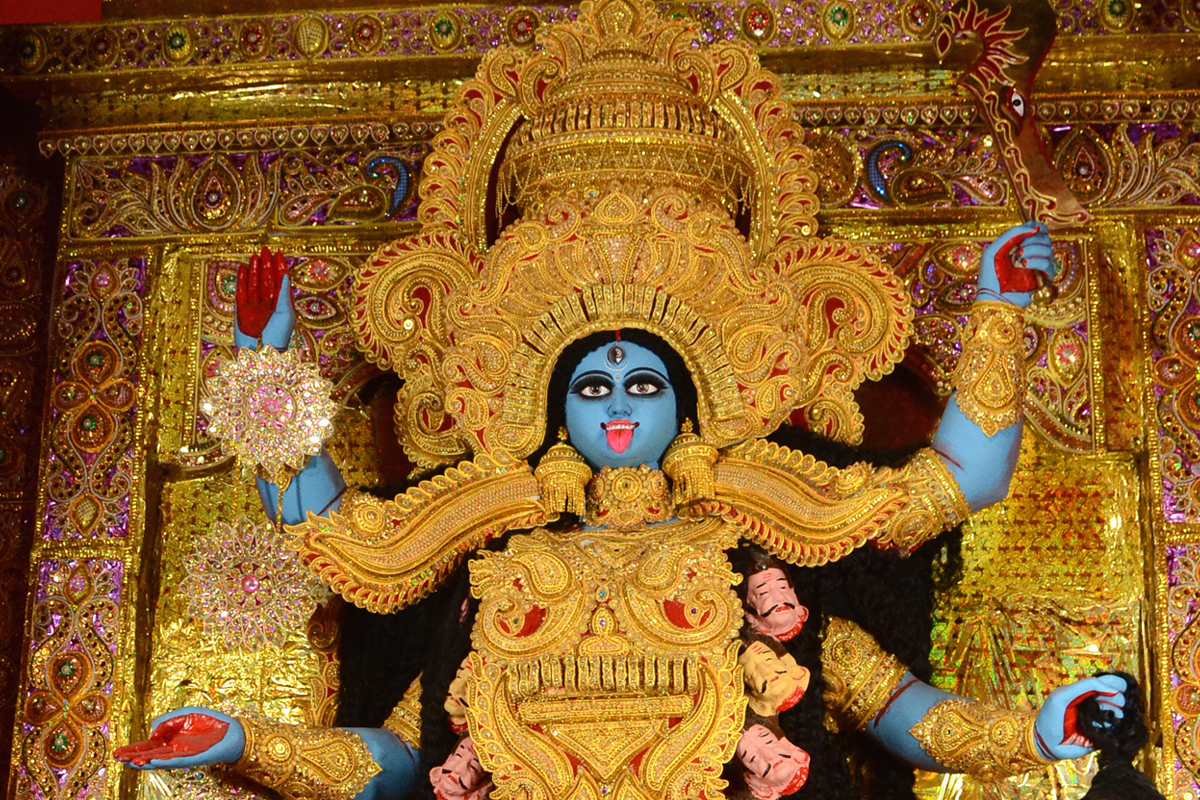Once upon a time the river Hooghly, the part of the Ganges that flows through Bengal, took a different path than in the present day and what remains of the original course is a canal which is called Adi or the “original” Ganga.
According to the myth, when a bereaved Lord Shiva, having just lost his wife Sati, in a fit of rage cut up her lifeless body into fifty-one parts and scattered them across the universe, one part, possibly the right foot’s big toe, fell on the banks of this ancient river where worshippers constructed a temple in the honour of one of her avatars, the Goddess Kali.
Advertisement
This temple is the Kalighat temple of Kolkata, the city which had arguably derived its name from its presiding deity when in the late 1600s three villages, Sutanuti, Gobindapur and of course Kalikata were merged to create it. This history is welldocumented.
Less known are theories such as those of a section of believers, according to whom the Kali temples were constructed by the ancient rishis, who were well-versed in the sciences, at geographically powerful points of the earth, regions where electromagnetic fields converged or passed through, for instance.
“The ascetics of yore, through an equal emphasis on meditation and the scientific study of the physical world, had achieved a kind of balance between the spiritual and physical worlds and they were able tocreate these power centers, the temples, where prayers or practicing of rituals were supposed to have powerful impacts on the day to day practical lives of people,” says Anath Taran Ghoshal, a priest who is initiated in the spiritual sect of Goddess Kali worship.
He explains, “While Kaal or Eternity is the masculine form, Kali is the female form of this power or ‘Shakti’. She is the creative force in the eternity of time and space.” Ghoshal says that the worship of Ma Kali as female Shakti is not just integral to the Hindu religion, but it is ultimately an essential part of the worship of even male Hindu Gods Brahma, Vishnu and Maheshwar, creator, preserver and destroyer respectively who are considered Her three sons.
“The idea is that without the female power, there cannot exist the male power,” he says.
“Kali Puja is the day and the night of the new moon when we ritually and collectively recall this.”
On the dark and moonless nights of Amavasya since ancient days, the Kalighat Temple has been the locus of one of the most sought after of the Kali Pujas where pilgrims from far and wide throng to in numbers going into hundreds and thousands. Around the area of the Temple and by the banks of the Adi Ganga, have cropped up congested markets and shops selling everything from clothes to flowers and other accessories for worship like conch shells and incense sticks, garlands, fruits and sweets. Neighbourhoods too have come up. The most prominent resident of Kalighat currently is of course, the West Bengal chief minister Mamata Banerjee.
“She not only resides in this blessed place but she is also a worshipper of Ma Kali and has been doing Kali Puja at her home every year for decades,” says Chandrima Bhattacharya, West Bengal miniser of health and family welfare.
During this season of the celebration of “female power” or Shakti which begins with Durga Puja and ends with Kali Puja with Lakshmi Puja coming in between, Banerjee had asked Bhattacharya to lead a team of women leaders from her political party Trinamul to disseminate information about the state government’s many public welfare schemes which benefit women.
“Didi (as Banerjee is affectionately called) is the quintessential example of a leader who not only advocates but also represents female power,” says Bhattacharya.
“She is the only woman chief minister of the country today and she has ensured that more than a third of her party’s workforce is women and this is even before the Women’s Reservation Bill was passed in Parliament. She is the creator of her political party and its leader. She almost single-handedly defeated a three and a half decade old government. I cannot think of a better embodiment of the idea of female power.”
Didi’s introduction and implementation of a number of welfare schemes that benefit women, including free ration, money in bank accounts, education, health and other benefits have also been hailed as her commitment to the cause of empowering women. What better time to take stock of all this than on Kali Puja, the day of the celebration of women’s empowerment and that too from Kalighat, this blessed place by the Adi Ganga.











